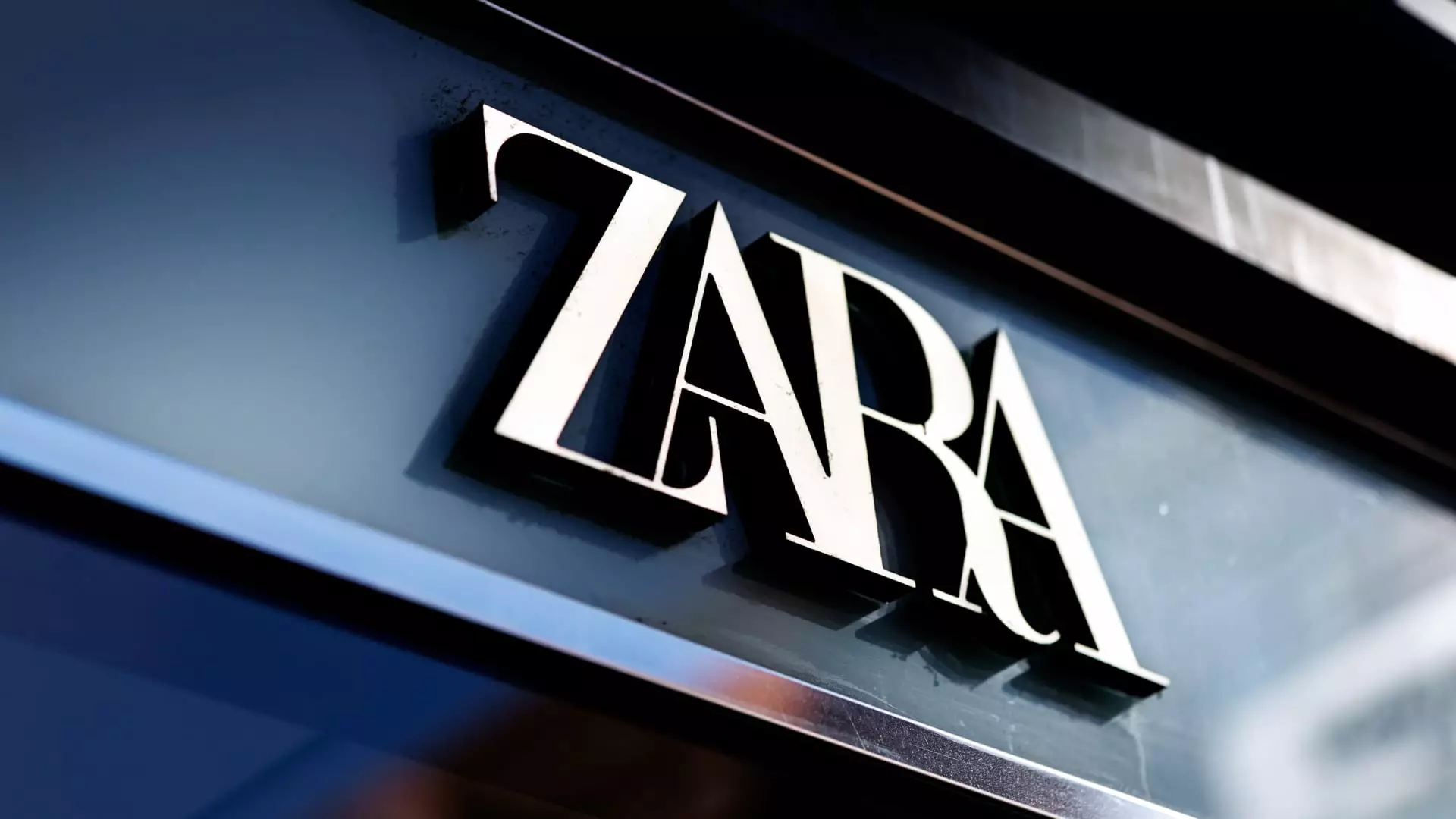Inditex, the powerhouse behind iconic fashion labels like Zara, is sending ripples of concern throughout the retail world. The company’s recent earnings report portrayed a disheartening picture, revealing that their quarterly sales fell short of expectations, triggering a notable decline in share value. The stark reality is that revenues only reached 8.27 billion euros ($9.44 billion) during the fiscal first quarter, which is a significant letdown compared to the 8.39 billion euros anticipated by analysts. Such figures should make investors uneasy; after all, when a retail giant falters in the face of economic uncertainty, the repercussions are likely to resonate far and wide.
Compounding these troubles, Inditex’s net income was recorded at 1.3 billion euros, a slight miss compared to forecasts of 1.32 billion euro. In an age where financial precision is paramount, such shortcomings raise red flags. The reality of the market is that every decimal counts; even minute discrepancies can lead to steep investor backlash, which we are witnessing with the share price plummeting by 4.4% shortly after the report was made public.
The Economic Fog Thickens
One of the most alarming aspects of the report was the disclosure of a sluggish start to the summer season. With only a 6% growth in sales from May 1 to June 9—dismal as compared to the booming 12% growth during the previous year—Inditex’s leadership is undoubtedly grappling with great unease. The broader economic climate has made forecasting potential growth seemingly more daunting. Gorka García-Tapia Yturriaga, Inditex’s head of investor relations, candidly acknowledged the uncertainties tied to tariffs and consumer spending. The phrase “difficult to predict” is not just a corporate cliché; it’s an ominous signal that indicates deeper troubles brewing beneath the surface.
Inditex’s operational model—the complex web of its diversified supply chains—is lauded, yet real questions have emerged about its effectiveness under current conditions. With substantial production across various international regions, including Asia and Europe, one wonders if this strategy may soon become more of a liability than an asset. Will this vast supply chain hold up amidst fluctuating economic sentiments, or could it devolve into a tangled mess that undermines efficiency and responsiveness?
Competition and Market Dynamics
The competitive landscape for Inditex is becoming increasingly treacherous. While they have traditionally held a position of strength against peers like H&M, the rise of low-cost competitors such as Shein and Temu looms ominously. These brands embody a shift in consumer behavior that Inditex might not adequately anticipate. The “bears” are licking their chops, eager to challenge the company’s valuation amid signs of a normalizing growth pattern—a trend starkly contrasting the previously explosive expansion that made Inditex a darling of investors.
Yet, despite these rising challenges, analysts are divided. Some, like Mamta Valechha from Quilter Cheviot, argue that Inditex’s historical resilience during turbulent times could still underscore a potential for recovery and reevaluated growth opportunities. The “bulls,” as they say, see room for optimism in the face of adversity.
The Aftermath of Tariff Policies
One cannot ignore the significant implications of tariff policies on corporate performance. Inditex’s reliance on a network that spans continents makes it vulnerable to geopolitical tensions and trade restrictions. While the impact of tariffs remains “unclear,” it’s clear that expanded trade barriers cannot be brushed aside without consequence. The uncertainty concerning tariffs invokes questions about Inditex’s ability to pivot in response to changing economic conditions, a crucial skill that could determine whether the company’s decline continues or can be reversed.
Inditex is navigating perilous waters, and the immediate future appears fraught with uncertainties stemming from sluggish sales, evolving competition, and the unpredictable implications of trade policies. With its previously robust growth narrative possibly waning, one has to wonder if this retail titan is facing its most serious challenges yet. The dangers ahead offer no comforting forecasts, and for a brand that used to symbolize unassailable strength, this is nothing short of a cautionary tale.

